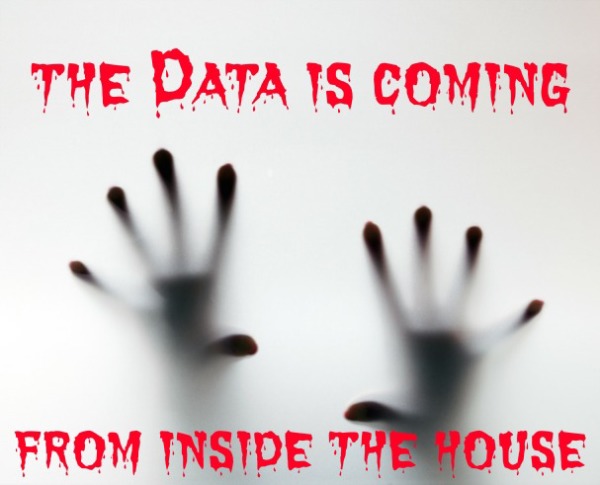It’s the classic twist in horror stories from 40 (or more) years ago, back in a time when most homes only had one phone line and the idea of calling your own home was something reserved only for phreakers. Here’s a clip of a movie scene from 1974 called “Black Christmas” (skip to 4:29 in if the video doesn’t load to the correct time):
While this might not be so scary now, I can assure you that at the time it was cutting edge in horror.
Fast forward 40 years and today the idea of calling someone from inside your house isn’t scary, it’s quite common. Never mind phone calls, sometimes I will send my daughter an instant message to come downstair for dinner. The constant flow of communication is not scary, it’s expected.
Which brings us to the the topic at hand: the Internet of Things (IoT). The idea behind the IoT is simple enough: anything, and anyone, can have an IP address attached to them at any moment, tracking data about their movement (and other things). And the IoT has given rise to the concept of “Little Data“, the idea that we can gather data about ourselves (like your FitBit) on a daily basis, data that we then analyze in order to make adjustments to our daily routines.
Here’s just a partial list of the items in and around your house built today that have such capabilities:
- Smartphones
- Cable modem
- Wireless router
- Wireless printer
- Tablets
- Laptops
- PCs
- Televisions
- Xbox/Playstation/etc.
- Home alarm system
- Automobile
- Security cameras
- Light bulbs
- Refrigerator
- Toaster
- Microwave
- Stove/Ovens
- Dishwasher
- Washer/Dryer
- Windows
Yes, that’s right, windows. Check out this website and note how it says “Your house will know when it’s raining and close the windows for you, even while you’re away.” Then go here and read about how cyber-criminals are using these devices in order to launch attacks.
Folks, this isn’t good news. And this list doesn’t even include the data being collected when you are using your devices. For example, what Google/Apple/Microsoft/Facebook/Yahoo are tracking as you navigate the Internet.
And yet I *still* don’t see people concerned about where the IoT is currently headed with regards to our privacy. With the number of data breaches continuing to rise it would seem to me that the makers of these devices know less about security, and privacy, than we’d like to believe.
So why don’t people care? I can only think of two reasons. One is that they haven’t been victims of a data breach in any way. The other? No one has scared them into thinking twice about IoT.
So, that’s why I made this:
The next time you are shopping for an appliance and you are told about all the great “smart” features that are available I want you to think about the above image, about your privacy, about your security, and I want you to ask some smart questions such as:
- Have I actually read and understand the user terms?
- Do I understand where my data is going, and how it will be shared?
- Is the data portable or downloadable?
- Will the appliance be fully functional if not connected to the Internet?
- Can I get my data from the device without it needing to be connected to the Internet?
- Can I change the passwords on the device?
- Is my home network secure?
Look, I’m a fan of IoT, I really am. I enjoy data. I love my FitBit. I’m going to get the Nest at some point.
But I also recognize that the IoT could be something that makes our lives worse, not better. We need to start asking questions like those above so manufacturers understand that privacy and security should be at the top of the feature list, and not an afterthought.



I can’t imagine what’s going to happen to my data caps once my Fridge starts talking to my Freezer.
They aren’t talking to each other right now? They share the same container!